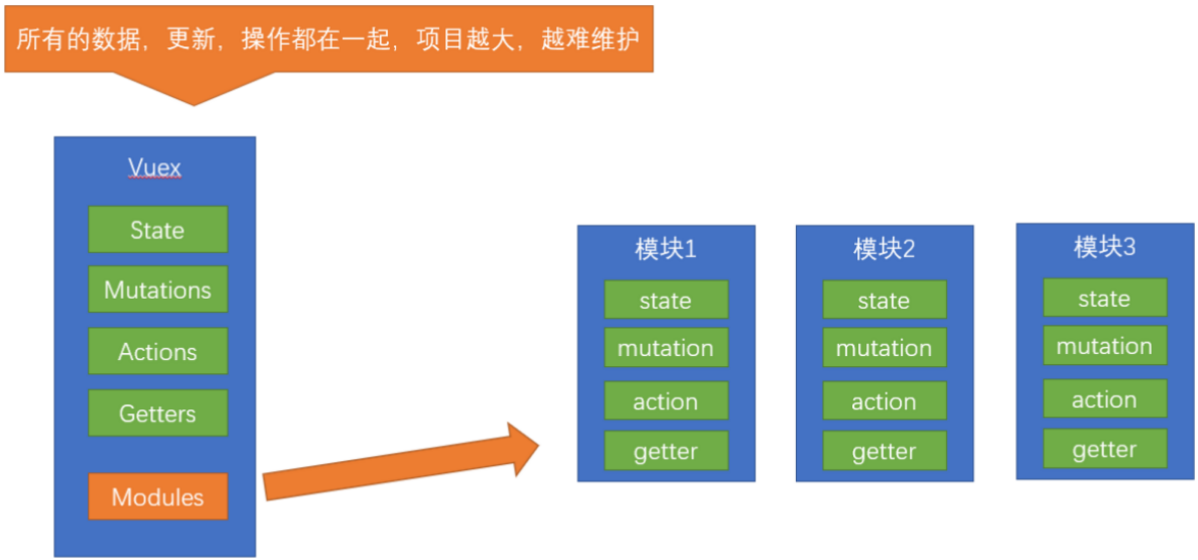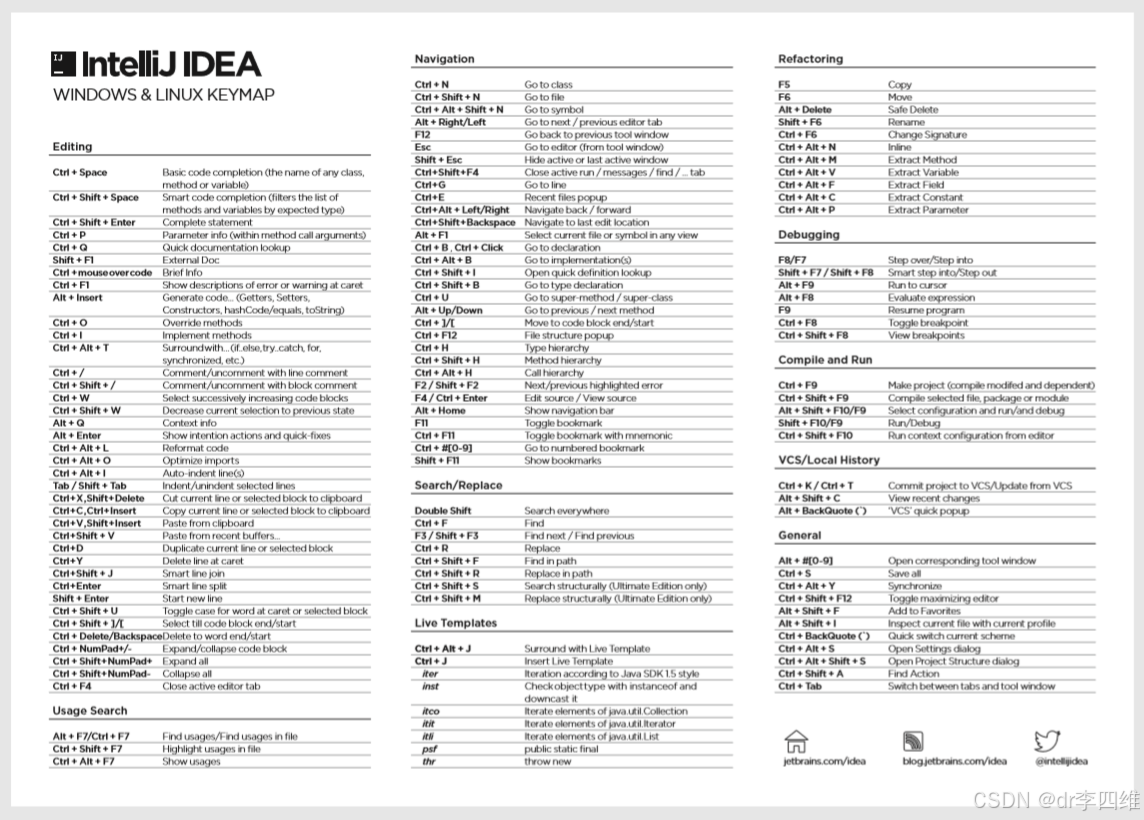本文属于sentinel学习笔记系列。网上看到吴就业老师的专栏,写的好值得推荐,我整理的有所删减,推荐看原文。
https://blog.csdn.net/baidu_28523317/category_10400605.html
sentinel 实现限流降级、熔断降级、黑白名单限流降级、系统自适应限流降级以及热点参数限流降级都是由 ProcessorSlot、Checker、Rule、RuleManager 组合完成。ProcessorSlot 作为调用链路的切入点,负责调用 Checker 检查当前请求是否可以放行;Checker 则根据资源名称从 RuleManager 中拿到为该资源配置的 Rule(规则),取 ClusterNode 统计的实时指标数据与规则对比,如果达到规则的阈值则抛出 Block 异常,抛出 Block 异常意味着请求被拒绝,也就实现了限流或熔断。
可以总结为以下三个步骤:
- 在 ProcessorSlot#entry 方法中调用 Checker#check 方法,并将 DefaultNode 传递给 Checker。
- Checker 从 DefaultNode 拿到 ClusterNode,并根据资源名称从 RuleManager 获取为该资源配置的规则。
- Checker 从 ClusterNode 中获取当前时间窗口的某项指标数据(QPS、avgRt 等)与规则的阈值对比,如果达到规则的阈值则抛出 Block 异常(也有可能将 check 交给 Rule 去实现)。
限流规则与规则配置加载器
rule
规则是围绕资源配置的,接口Rule 只定义获取资源。
public interface Rule {
/**
* Get target resource of this rule.
*
* @return target resource of this rule
*/
String getResource();
}public abstract class AbstractRule implements Rule {
/**
* rule id.
*/
private Long id;
/**
* Resource name. 资源名
*/
private String resource;
/**
* 流控对应的调用来源
*/
private String limitApp;Rule、AbstractRule 与其它实现类的关系如下图所示:

FlowRule 是限流规则配置类,FlowRule 继承 AbstractRule 并实现 Rule 接口。FlowRule 源码如下
public class FlowRule extends AbstractRule {
public FlowRule() {
super();
setLimitApp(RuleConstant.LIMIT_APP_DEFAULT);
}
public FlowRule(String resourceName) {
super();
setResource(resourceName);
setLimitApp(RuleConstant.LIMIT_APP_DEFAULT);
}
/**
* The threshold type of flow control (0: thread count, 1: QPS).
* 限流阈值类型
*/
private int grade = RuleConstant.FLOW_GRADE_QPS;
/**
* Flow control threshold count. 限流阈值 配置的是qps类型则代表qps的值;配置的是线程数类型则代表线程数
*/
private double count;
/**
* Flow control strategy based on invocation chain.
* 流控限流策略
* {@link RuleConstant#STRATEGY_DIRECT} for direct flow control (by origin);
* {@link RuleConstant#STRATEGY_RELATE} for relevant flow control (with relevant resource);
* {@link RuleConstant#STRATEGY_CHAIN} for chain flow control (by entrance resource).
*/
private int strategy = RuleConstant.STRATEGY_DIRECT;
/**
* Reference resource in flow control with relevant resource or context.
* 关联流控的资源
*/
private String refResource;
/**
* Rate limiter control behavior. 流控效果控制
* 0. default(reject directly), 1. warm up, 2. rate limiter, 3. warm up + rate limiter
*/
private int controlBehavior = RuleConstant.CONTROL_BEHAVIOR_DEFAULT;
//对应流控效果为Warm Up情况下,冷启动时长(预热时长),单位秒
private int warmUpPeriodSec = 10;
/**
* Max queueing time in rate limiter behavior.
* 对应流控效果为排队等待情况下,出现的超时时间
*/
private int maxQueueingTimeMs = 500;
// 对应新增流控规则页面的是否集群
private boolean clusterMode;
/**
* Flow rule config for cluster mode.集群流控的相关配置
*/
private ClusterFlowConfig clusterConfig;
/**
* The traffic shaping (throttling) controller. 流量整形的实现,不同流控效果有不同算法
*/
private TrafficShapingController controller;字段属性有些多,可以对比sentinel 限流保护-笔记-CSDN博客 跟官网文档来理解


RuleManager
Sentinel 中用来管理规则配置的类都以规则类的名称+Manger 命名,用来加载限流规则配置以及缓存限流规则配置的类为 FlowRuleManager,其部分源码如下:
public class FlowRuleManager {
// 缓存限流规则
private static volatile Map<String, List<FlowRule>> flowRules = new HashMap<>();
// PropertyListener 监听器
private static final FlowPropertyListener LISTENER = new FlowPropertyListener();
//SentinelProperty ,默认的 DynamicSentinelProperty
private static SentinelProperty<List<FlowRule>> currentProperty = new DynamicSentinelProperty<List<FlowRule>>();
/** the corePool size of SCHEDULER must be set at 1, so the two task ({@link #startMetricTimerListener()} can run orderly by the SCHEDULER **/
@SuppressWarnings("PMD.ThreadPoolCreationRule")
private static final ScheduledExecutorService SCHEDULER = Executors.newScheduledThreadPool(1,
new NamedThreadFactory("sentinel-metrics-record-task", true));
static {//给默认的 SentinelProperty 注册监听器(FlowPropertyListener)
currentProperty.addListener(LISTENER);
startMetricTimerListener();
}
。。。
public static List<FlowRule> getRules() {
List<FlowRule> rules = new ArrayList<FlowRule>();
for (Map.Entry<String, List<FlowRule>> entry : flowRules.entrySet()) {
rules.addAll(entry.getValue());
}
return rules;
}
//更新规则
public static void loadRules(List<FlowRule> rules) {
currentProperty.updateValue(rules);
}
我们之前demo对用FlowRuleManager.loadRules()来更新规则生效,注意1.8.6版本这里面
SentinelProperty ,SentinelProperty 是 Sentinel 提供的一个接口,可注册到 Sentinel 提供的各种规则的 Manager,例如 FlowRuleManager,并且可以给 SentinelProperty 添加监听器,在配置改变时,你可以调用 SentinelProperty#updateValue 方法,由它负责调用监听器去更新规则,而不需要调用 FlowRuleManager#loadRules 方法。这块先先不展开梳理,后面结合nacos再看。
限流处理器插槽:FlowSlot
FlowSlot 是实现限流功能的切入点,它作为 ProcessorSlot 插入到 ProcessorSlotChain 链表中,在 entry 方法中调用 Checker 去判断是否需要拒绝当前请求,如果需要拒绝请求则抛出 Block 异常。FlowSlot 的源码如下:
@Spi(order = Constants.ORDER_FLOW_SLOT)
public class FlowSlot extends AbstractLinkedProcessorSlot<DefaultNode> {
private final FlowRuleChecker checker;
public FlowSlot() {
this(new FlowRuleChecker());
}
/**
* Package-private for test.
*
* @param checker flow rule checker
* @since 1.6.1
*/
FlowSlot(FlowRuleChecker checker) {
AssertUtil.notNull(checker, "flow checker should not be null");
this.checker = checker;
}
@Override
public void entry(Context context, ResourceWrapper resourceWrapper, DefaultNode node, int count,
boolean prioritized, Object... args) throws Throwable {
checkFlow(resourceWrapper, context, node, count, prioritized);
fireEntry(context, resourceWrapper, node, count, prioritized, args);
}
//校验是否限流
void checkFlow(ResourceWrapper resource, Context context, DefaultNode node, int count, boolean prioritized)
throws BlockException {
checker.checkFlow(ruleProvider, resource, context, node, count, prioritized);
}
@Override
public void exit(Context context, ResourceWrapper resourceWrapper, int count, Object... args) {
fireExit(context, resourceWrapper, count, args);
}
// 规则生产者
private final Function<String, Collection<FlowRule>> ruleProvider = new Function<String, Collection<FlowRule>>() {
@Override // 参数为资源名称
public Collection<FlowRule> apply(String resource) {
// Flow rule map should not be null.
Map<String, List<FlowRule>> flowRules = FlowRuleManager.getFlowRuleMap();
return flowRules.get(resource);
}
};
}限流规则检查器:FlowRuleChecker
FlowRuleChecker 负责判断是否需要拒绝当前请求,方法很多,先看看调用checkFlow
public class FlowRuleChecker {
public void checkFlow(Function<String, Collection<FlowRule>> ruleProvider, ResourceWrapper resource,
Context context, DefaultNode node, int count, boolean prioritized) throws BlockException {
if (ruleProvider == null || resource == null) {
return;
}// 获取匹配的规则
Collection<FlowRule> rules = ruleProvider.apply(resource.getName());
if (rules != null) {//遍历规则
for (FlowRule rule : rules) { // 检查规则能否通过
if (!canPassCheck(rule, context, node, count, prioritized)) {
throw new FlowException(rule.getLimitApp(), rule);
}
}
}
}注意:遍历限流规则,只要有一个限流规则达到限流阈值即可抛出 FlowException,使用 FlowException 目的是标志当前请求因为达到限流阈值被拒绝,FlowException 是 BlockException 的子类;
canPassCheck 方法返回 true 说明允许请求通过,反之则不允许通过。canPassCheck 方法源码如下:
public boolean canPassCheck(/*@NonNull*/ FlowRule rule, Context context, DefaultNode node, int acquireCount,
boolean prioritized) {
String limitApp = rule.getLimitApp();
//当前限流规则只对哪个调用来源生效,一般不为null,默认为“default”(不限定调用来源)
if (limitApp == null) {
return true;
}
// 集群模式下的规则检测
if (rule.isClusterMode()) {
return passClusterCheck(rule, context, node, acquireCount, prioritized);
}
//单机模式下规则检测
return passLocalCheck(rule, context, node, acquireCount, prioritized);
}先不讨论集群限流的情况,看看单机的passLocalCheck
private static boolean passLocalCheck(FlowRule rule, Context context, DefaultNode node, int acquireCount,
boolean prioritized) {
//根据调用来源和“调用关系限流策略”选择 DefaultNode;
Node selectedNode = selectNodeByRequesterAndStrategy(rule, context, node);
if (selectedNode == null) {
return true;
}
return rule.getRater().canPass(selectedNode, acquireCount, prioritized);
}- selectNodeByRequesterAndStrategy返回ClusterBuilderSlot阶段生成的ClusterNode
-
getRater 返回TrafficShapingController,在默认模式下返回流控效果策略DefaultController。DefaultController#canPass 完成canPassCheck。
下面分别看看这两个方法。
流控节点选择
selectNodeByRequesterAndStrategy 方法的实现有多种情况。原码如下:
public class FlowRuleChecker {
static Node selectNodeByRequesterAndStrategy(/*@NonNull*/ FlowRule rule, Context context, DefaultNode node) {
// The limit app should not be empty.限流规则针对哪个来源生效
String limitApp = rule.getLimitApp();
// 基于调用关系的限流策略
int strategy = rule.getStrategy();
// 远程来源
String origin = context.getOrigin();
if (limitApp.equals(origin) && filterOrigin(origin)) {
if (strategy == RuleConstant.STRATEGY_DIRECT) {
// 1 Matches limit origin, return origin statistic node.
return context.getOriginNode();
}
//2
return selectReferenceNode(rule, context, node);
} else if (RuleConstant.LIMIT_APP_DEFAULT.equals(limitApp)) {
if (strategy == RuleConstant.STRATEGY_DIRECT) {
//3 Return the cluster node.
return node.getClusterNode();
}
//4
return selectReferenceNode(rule, context, node);
} else if (RuleConstant.LIMIT_APP_OTHER.equals(limitApp)
&& FlowRuleManager.isOtherOrigin(origin, rule.getResource())) {
if (strategy == RuleConstant.STRATEGY_DIRECT) {
// 5
return context.getOriginNode();
}
//6
return selectReferenceNode(rule, context, node);
}
return null;
}
static Node selectReferenceNode(FlowRule rule, Context context, DefaultNode node) {
String refResource = rule.getRefResource();
int strategy = rule.getStrategy();
if (StringUtil.isEmpty(refResource)) {
return null;
}
if (strategy == RuleConstant.STRATEGY_RELATE) {
return ClusterBuilderSlot.getClusterNode(refResource);
}
if (strategy == RuleConstant.STRATEGY_CHAIN) {
if (!refResource.equals(context.getName())) {
return null;
}
return node;
}
// No node.
return null;
}如果当前限流规则的 limitApp 为 default,则说明该限流规则对任何调用来源都生效,针对所有调用来源限流,否则只针对指定调用来源限流。
1 如果调用来源与当前限流规则的 limitApp 相等,且 strategy 为 STRATEGY_DIRECT,则使用调用来源的 StatisticNode,实现针对调用来源限流。
2 前置条件与(1)相同,依然是针对来源限流。selectReferenceNode
- strategy 为 STRATEGY_RELATE:使用引用资源的 ClusterNode;
- strategy 为 STRATEGY_CHAIN:使用当前资源的 DefauleNode。
3当 limitApp 为 default 时,针对所有来源限流。如果 strategy 为 STRATEGY_DIRECT,则使用当前资源的 ClusterNode。
4 前置条件与(3)相同,依然是针对所有来源限流。selectReferenceNode
5 如果 limitApp 为 other,且该资源的所有限流规则都没有针对当前的调用来源限流。如果 strategy 为 STRATEGY_DIRECT,则使用 origin 的 StatisticNode。
6 前置条件与(5)一样。selectReferenceNode
从 selectNodeByRequesterAndStrategy 方法可以看出,Sentinel 之所以针对每个资源统计访问来源的指标数据,也是为了实现对丰富的限流策略的支持.比如针对调用来源限流可限制并发量较高的来源服务的请求,而对并发量低的来源服务的请求可不限流,或者是对一些并没有那么重要的来源服务限流。
TrafficShapingController
Sentinel 支持对超出限流阈值的流量采取效果控制器控制这些流量,流量效果控制支持:直接拒绝、Warm Up(冷启动)、匀速排队。对应 FlowRule 中的 controlBehavior 字段。在调用 FlowRuleManager#loadRules 方法时,FlowRuleManager 会将限流规则配置的 controlBehavior 转为对应的 TrafficShapingController。
public interface TrafficShapingController {
/**
* Check whether given resource entry can pass with provided count.
* 判断当前请求是否能通过
* @param node resource node
* @param acquireCount count to acquire
* @param prioritized whether the request is prioritized
* @return true if the resource entry can pass; false if it should be blocked
*/
boolean canPass(Node node, int acquireCount, boolean prioritized);
/**
* Check whether given resource entry can pass with provided count.
* 判断当前请求是否能通过
* @param node resource node
* @param acquireCount count to acquire
* @return true if the resource entry can pass; false if it should be blocked
*/
boolean canPass(Node node, int acquireCount);
}

DefaultController
DefaultController 是默认使用的流量效果控制器,直接拒绝超出阈值的请求。当 QPS 超过限流规则配置的阈值,新的请求就会被立即拒绝,抛出 FlowException。
@Override
public boolean canPass(Node node, int acquireCount, boolean prioritized) {
// 获取当前已使用的token:qps 算每秒被放行的请求数,threads 统计的当前并行占用的线程数
int curCount = avgUsedTokens(node);
//当前已使用token + 获取的token 大于token数量的场景
if (curCount + acquireCount > count) {
//qps 且prioritized 参数的值为 true(有优先级的请求可以占用未来时间窗口的统计指标)
if (prioritized && grade == RuleConstant.FLOW_GRADE_QPS) {
long currentTime;
long waitInMs;
currentTime = TimeUtil.currentTimeMillis();
//当前请求需要等待的时间,单位毫秒
waitInMs = node.tryOccupyNext(currentTime, acquireCount, count);
if (waitInMs < OccupyTimeoutProperty.getOccupyTimeout()) {
//将休眠之后对应的时间窗口的 pass(通过)这项指标数据的值加上 acquireCount
node.addWaitingRequest(currentTime + waitInMs, acquireCount);
// 添加占用未来的 pass 指标的数量
node.addOccupiedPass(acquireCount);
// 休眠等待,当前线程阻塞
sleep(waitInMs);
// PriorityWaitException indicates that the request will pass after waiting for {@link @waitInMs}.
//休眠结束后抛出 PriorityWait 异常,表示当前请求是等待了 waitInMs 之后通过的
throw new PriorityWaitException(waitInMs);
}
}
return false;
}
return true;
}
private int avgUsedTokens(Node node) {
if (node == null) {
return DEFAULT_AVG_USED_TOKENS;
}
return grade == RuleConstant.FLOW_GRADE_THREAD ? node.curThreadNum() : (int)(node.passQps());
}一般情况下,prioritized 参数的值为 false,所以这个 canPass 方法实现的流量效果就是直接拒绝。
限于篇幅,其他限流RateLimiterController、WarmUpController、WarmUpRateLimiterController 待整理。



















